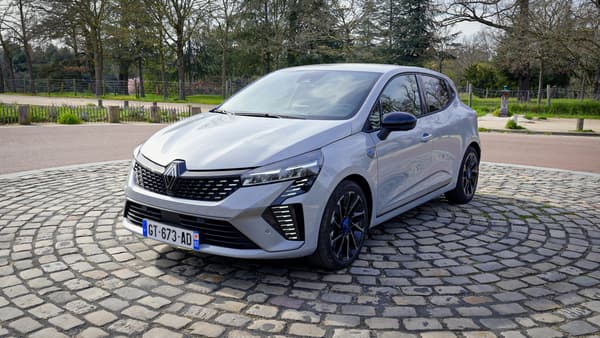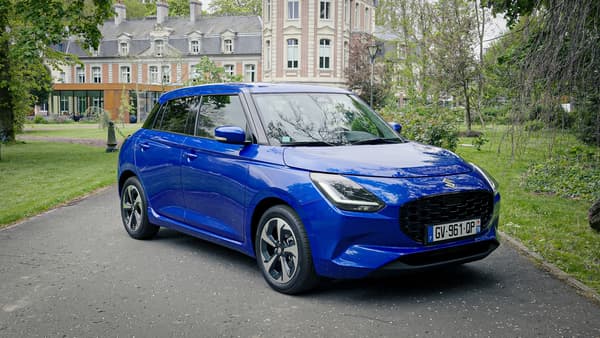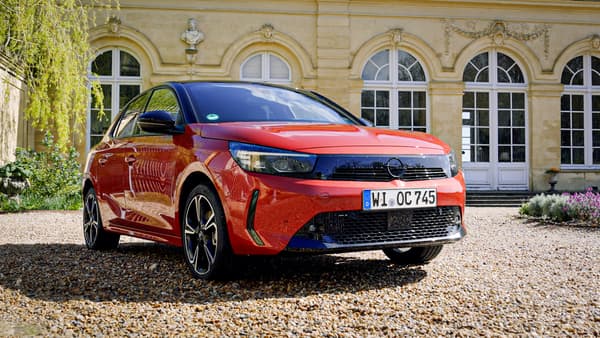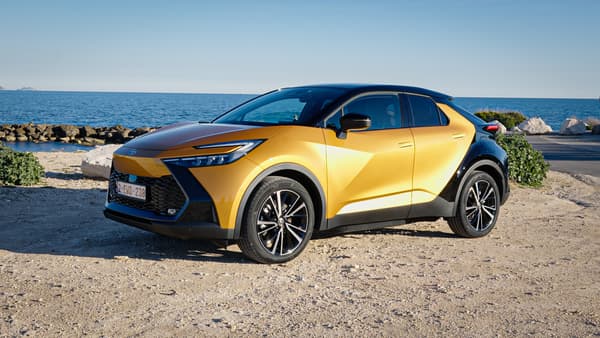More than gasoline or electric. During the first four months of the year, the French mainly bought hybrid cars. These dual models captured 37.2% of the French market, double that of electric car registrations (17.8% of the market).
Wanting more ecological models, (also) reducing consumption, avoiding the penalty (or at least reducing it)… The reasons for this success are multiple. The offer proposed by manufacturers has also expanded in recent years, to comply with their obligations regarding CO2 emissions, imposed by European authorities.
But different technological realities hide behind the term hybrid. From the “classic” hybrid (also called “full hybrid” or “self-charging hybrid”) developed in 1997 by Toyota with the first Prius, manufacturers have moved on to the “mild” hybrid, available in 12 and 48 volts, and the plug-in hybrid. , with a larger battery.
Although the basic principle remains the same (an electric machine replaces, or even replaces, the heat engine in periods of highest energy consumption), each hybrid corresponds to a specific use. A brief glossary of hybrid cars.
Classic hybrid, an interesting compromise
This is the basic technology, invented by Toyota in the late 90s and later adopted by other manufacturers. Renault, in particular, whose sales were boosted in April in France by the Clio E-Tech hybrid.
This technology has the advantage of offering 100% electric driving at low speed for a few hundred metres, which in the city allows you to drive fully electric on most of your journeys.
Another advantage: comfort. At start-up and during these phases of electric driving, up to 80% of the time driving in the city according to Renault, which seemed quite realistic to us during our test, we found the silence and flexibility of driving a small electric car.

In addition, it is an engine that will not change your habits too much: it is not necessary to plug in the vehicle, which recharges its small battery (1.2 kWh in our Clio E-Tech) recovering energy during deceleration phases.
That is why we also talk about “non-rechargeable” hybrid (the battery is recharged, but cannot be plugged in) or “self-rechargeable”. For its part, Renault adopts a name in English with “full hybrid”, not in opposition to its “midl hybrid” solution (for light hybrids) and the “plug-in hybrid” engine.
In this way, the battery charge level varies rapidly and it is the vehicle that guarantees energy management. Therefore, we can sometimes be a little surprised to feel the engine start when we are stopped at a red light: it is simply that the car anticipates that it is time to charge the battery to have enough energy for the rest of the trip.
- Our test model: Renault Clio E-Tech full hybrid, from 23,900 euros
12V or 48V Mild Hybrid, a first step towards electric
This is another hybrid engine that is occupying an increasingly important place in today’s automotive offering: the mild hybrid or “mild hybrid” (MHEV for “mild hybrid electric vehicle”).
This is a first level of electrification, a super “start&stop” that can also accompany the engine to reduce consumption, recovering energy during deceleration phases.

With an even smaller battery than the classic hybrid, you shouldn’t expect to do much electric driving either. The objective here is rather to reduce consumption, thanks in particular to this limited weight that is added to the thermal part.
An important advantage of this solution is that it remains quite simple in design and architecture, which does not involve significant additional costs. This will also reduce CO2 emissions so that manufacturers respect their targets at European level and avoid (or reduce) the CO2 penalty for the consumer.
We can distinguish two large families of mild hybrids, depending on the battery voltage, with a reduction in consumption of around 10% compared to a thermal engine with power equivalent to 12 volts, and 20% at 48 volts.

Be careful because these models can have somewhat misleading names. Our two tested models, Suzuki and Opel, for example, have a small “Hybrid” badge on the rear, which may suggest that we are dealing with classic hybridizations that allow more electric driving.
- Our 12V mild hybrid test model: Suzuki Swift Hybrid SHVS, from 17,790 euros
- Our test model in 48V mild hybridization: Opel Corsa “Hybrid 100cv”, from 22,200 euros
Plug-in hybrid, versatile but more expensive
This is often the engine presented as the best of both worlds, thermal and electric. The plug-in hybrid has a larger capacity battery, which allows it to travel several dozen kilometers 100% electric.
An engine that is more commonly found in premium manufacturers such as German brands because this technology is quite expensive and is rather offered in large vehicles.
The first prices are found in MG with its EHS from 35,000 euros or in Kia with the XCeed PHEV from 37,540 euros. Rare exceptions, since prices usually far exceed 40,000 euros in other models in the category.
Our guinea pig to test this engine is a vehicle quite accustomed to classic hybrid engines such as the Toyota C-HR. The new generation launched by the Japanese manufacturer offers for the first time a PHEV with the possibility of traveling up to 60 km in 100% electric mode. Price level: it has at least 44,900 euros, almost 10,000 euros more than its non-rechargeable hybrid version.

With prices like this, the gains in power and comfort are very significant: you have an electric car for your daily trips, but with the versatility that the thermal part allows. Then we must expect excess consumption linked to the weight of the battery on long trips.
This is also what explains why this engine is often criticized, with actual emissions far exceeding the advertised levels. However, certain use cases allow this balance to be optimized, maximizing electrical operation on a daily basis (and therefore plugging in the vehicle to charge it) and taking occasional long trips throughout the year.
New generation models could be better suited for these long trips. The new Skoda Kodiaq will soon offer, for example, a PHEV version with 100 km of autonomy and the possibility of fast charging using direct current. It is enough to consider a double trip to the pits, gasoline and refueling, when stopping at a rest area on the highway, with the idea of reducing consumption as much as possible.
- Our plug-in hybrid test model: Toyota C-HR PHEV, from 44,900 euros
Source: BFM TV

